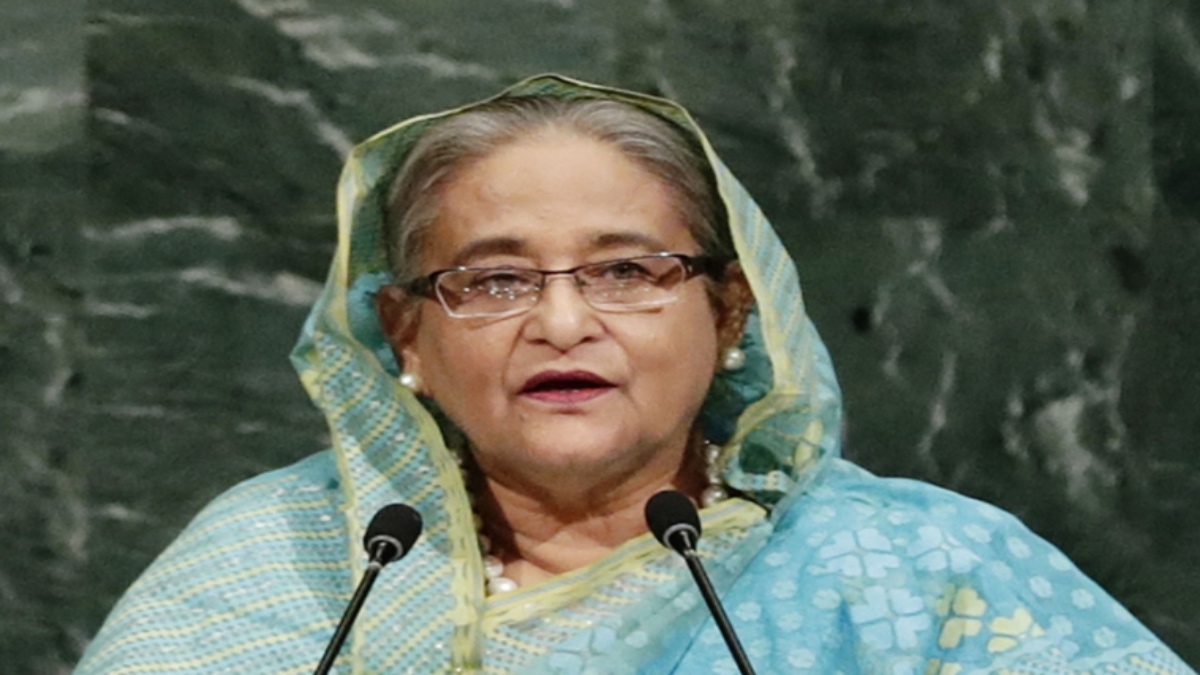


Bangladesh is burning. Violence is sweeping through the land, with several members of the minority Hindu community being butchered to death by Islamist radicals. Hindu homes, temples, businesses and even villages have been burnt down. News is coming of murder, rape and plunder. There is major conflagration in places like Comilla, Noakhali, Rangpur and Feni. Bangladesh Prime Minister Sheikh Hasina is categorical that “nobody will be spared. It doesn’t matter which religion they belong to. They will be hunted down and punished.” Forces have been deployed to control the violence. In spite of that, violence continues—for five days now. Eyewitnesses talk about inadequate police presence on the ground, especially in remote areas. The whole pogrom seems to have been pre-planned and timed to coincide with the Bengali Hindu’s biggest festival, Durga Puja. Trouble started from a village in a remote area where Islam’s Holy Book was deliberately placed at the foot of the Durga idol in the middle of the night when no one was present at the puja pandal, and a photo was clicked and spread on social media. Apparently, the next day, a live streaming was done of the Holy Book being “rescued” by the police, leading to the outbreak of the violence. It needs to be found out who placed the Holy Book in the pandal and why the police allowed the streaming to take place, thus inciting the people. The police is also being accused of inaction in many areas. A quick look through the Bangladesh media shows that questions are being raised even about the role played by some politicians in turning a blind eye to the violence, if not abetting it actively. Consensus is building that the anger is anything but spontaneous, and much of it is meant to scare the Hindus out of the country and grab their assets, apart from spoiling India-Bangladesh ties.
It is being alleged that the pro Pakistan Jamaat-e-Islami is behind the violence. The Jamaat, which is a radical extremist organisation, was part of the ruling coalition of Khaleda Zia’s Bangladesh Nationalist Party (BNP) between 2001 and 2006. When Bangladesh was under Pakistani occupation, the Jamaat formed the Razakar paramilitary force, which worked with Pakistani soldiers to commit genocide. While the Hasina government has been coming down heavily on the Jamaat, including sending Razakars to the gallows, the radical group has always had a major presence on the ground, with their influence extending to at least 10% of the population. This may not be enough to bring them to power, except in coalition with the BNP, but is more than enough for fomenting violence. It was to counter the Jamaat’s hold on the underprivileged that the Hasina government had started courting another Islamist group, the Hefazat-e-Islam (HIM), but it turned out of a similar shade as the Jamaat and started flexing its muscles from as far back 2013, when they came up with a 13-point charter demanding the enactment of a blasphemy law with provision for death penalty. Their opposition to statues led to the removal of a Goddess of Justice statue from the Supreme Court in 2017, and under pressure, the Hasina government even recognised a madrasa degree as equivalent to a postgraduate degree. It is only recently that her Awami League government has started realising its mistakes and has reopened the terror cases against HIM. It was the HIM that was responsible for the protests against Prime Minister Narendra Modi’s visit to Bangladesh earlier this year, and the subsequent violence against the Hindu community. History shows that Bangladesh’s radical clerics can unleash mayhem on the streets and bring life to a standstill whenever they want to. By appeasing groups such as HIM, the Awami League government has been seen to be buying peace with them, thus making Islamist radicals in general think that they can get away with murder.
Sheikh Hasina should not forget the period of 2013 to 2016 when the worst kind of radical Islamist violence took place in her country, with bloggers being hacked to death, and well off youngsters turning terrorists and going on a killing spree at a café in the heart of Dhaka. Whatever be its claims to a syncretic culture, Bangladesh has always had a major problem of Islamist fundamentalism, one of the reasons why its minority population has started dwindling over the decades. Unless this problem is tackled with an iron hand, it will deal a death blow to Bangladesh and its fledgling economic achievements—apart from becoming a major security headache for India. For the sake of Bangladesh and its people, it is imperative on the Hasina government’s part not to come across as soft towards the perpetrators of the heinous crimes against Hindus.